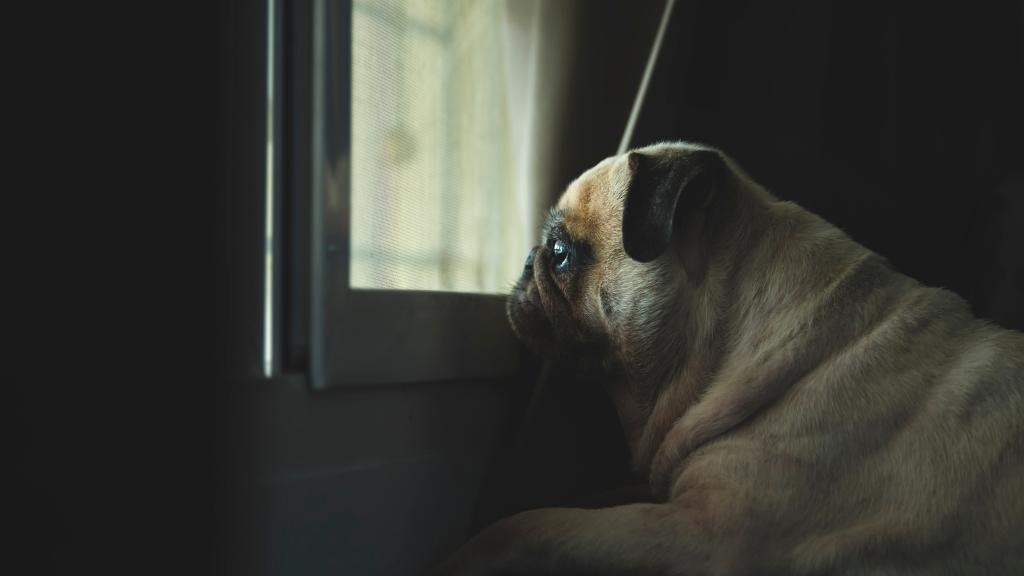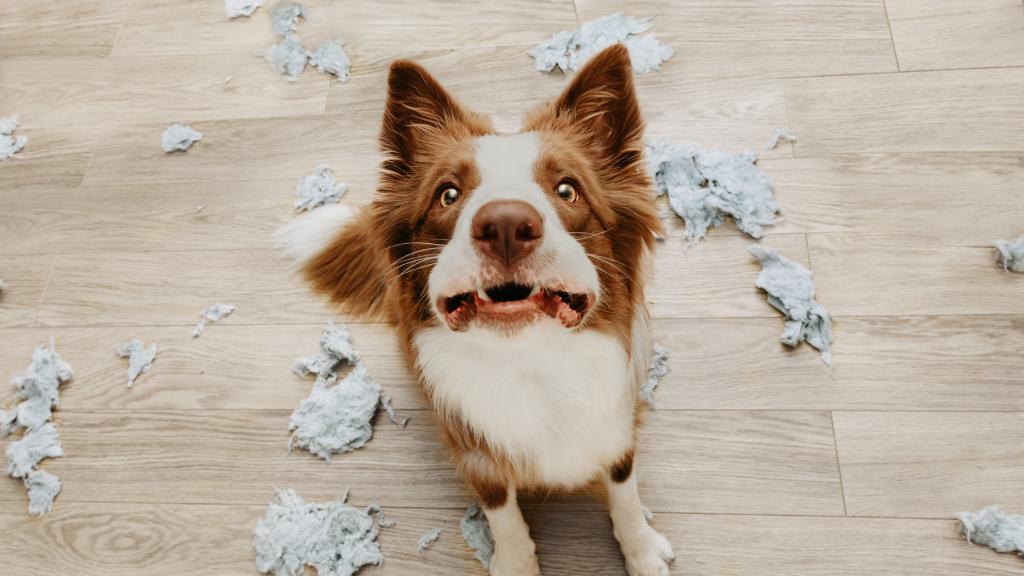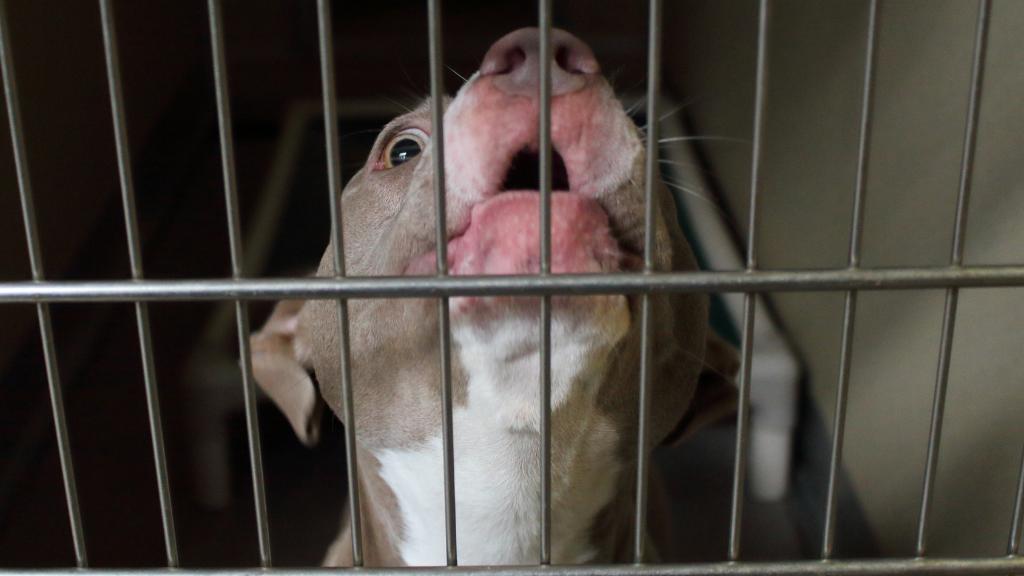If you have a furry friend who becomes distressed whenever you leave the house, then you are familiar with the challenges of dealing with separation anxiety in dogs. It can be heartbreaking to see your pet in distress but rest assured, there are effective strategies that can help alleviate their anxiety. From gradual desensitization to creating a safe and comfortable environment, this article will provide you with valuable tips and techniques to help your dog cope with separation and feel calmer when you’re not around.
Table of Contents
Understanding Separation Anxiety in Dogs
Separation anxiety in dogs can be a distressing and challenging issue for both dogs and their owners. It occurs when dogs become anxious and fearful when left alone or separated from their owners. It’s important to recognize the symptoms of separation anxiety in dogs to properly address and manage this condition.
Recognizing the symptoms of separation anxiety
When left alone, dogs with separation anxiety may exhibit various symptoms. These can include excessive barking or howling, destructive behavior, urinating or defecating indoors, pacing, restlessness, and even attempts to escape. It’s important to keep an eye out for these behaviors and understand that they are a manifestation of your dog’s anxiety.
Understanding the causes of separation anxiety in dogs
Separation anxiety in dogs can be caused by a variety of factors. These include changes in routine, a traumatic event in the dog’s past, a lack of socialization or training, or even a strong attachment to their owners. Understanding the underlying cause of your dog’s separation anxiety is crucial in developing effective strategies to address it.
The importance of addressing separation anxiety in dogs
Separation anxiety can have a significant impact on a dog’s well-being and quality of life. It can lead to stress-related health issues, damage to property, strained relationships, and overall increased anxiety for both the dog and their owner. Therefore, it is crucial to address and manage separation anxiety in dogs to ensure their mental and emotional well-being.

Creating a Safe and Secure Environment
Creating a safe and secure environment is an essential step in managing separation anxiety in dogs. By providing a comfortable and den-like space, offering physical and mental stimulation, and utilizing calming pheromones or music, you can help your dog feel more secure and relaxed when they are alone.
Providing a comfortable den-like space
Dogs are den animals by nature, and having a designated space that resembles a den can provide them with a sense of security. Ensure that this space is comfortable, with soft bedding or blankets, and consider using a crate that is properly introduced and associated with positive experiences.
Ensuring physical and mental stimulation
Boredom can exacerbate separation anxiety in dogs. To prevent this, make sure your dog receives enough physical exercise and mental stimulation throughout the day. This can include regular walks, playtime, and interactive games that challenge their problem-solving skills.
Using calming pheromones or music
Calming pheromone diffusers or sprays can help create a soothing environment for dogs with separation anxiety. These pheromones mimic the natural scents produced by a mother dog, which can have a calming effect on dogs. Additionally, playing soft music or white noise can help drown out external sounds that may trigger anxiety in your dog.
Gradual Desensitization and Counterconditioning
Gradual desensitization and counterconditioning are effective techniques that can help your dog become more comfortable and less anxious when left alone. Through the gradual introduction of departures, positive reinforcement, and conditioning exercises, you can help your dog build positive associations with being alone.
Introduction to desensitization and counterconditioning
Desensitization involves gradually exposing your dog to the triggers of their anxiety in a controlled and manageable manner. Counterconditioning, on the other hand, is the process of replacing anxious or fearful responses with positive ones. Together, these techniques can help your dog overcome separation anxiety.
Developing a gradual departure routine
Start by leaving your dog alone for short periods, initially just a few minutes, and gradually increase the duration over time. It is essential to observe their behavior and ensure they remain calm and relaxed during these departures. Return calmly and reward your dog for their calm behavior to reinforce positive associations.
Implementing positive reinforcement techniques
Positive reinforcement involves rewarding your dog for desired behaviors. Use treats, praise, or toys to reward your dog when they display calm and relaxed behavior during your departure routine. This positive reinforcement will help reinforce the idea that being alone is a positive experience.
Establishing a Consistent Routine
A consistent routine can provide comfort and predictability for dogs with separation anxiety. By sticking to a regular schedule, balancing exercise and rest, and creating predictability, you can help minimize anxiety and provide a stable environment for your dog.
Sticking to a regular schedule
Dogs thrive on routine and predictability. Establish a consistent daily schedule that includes regular mealtimes, exercise sessions, playtime, and rest. Following a set routine will help your dog feel more secure and reduce anxiety-related behavior.
Balancing exercise and rest
Providing your dog with adequate exercise is important, as it helps to release excess energy and reduce anxiety. However, it is equally important to ensure your dog has enough rest and downtime. A balance between physical activity and relaxation will contribute to your dog’s overall well-being and help alleviate separation anxiety.
Creating predictability for your dog
Creating a predictable environment can help dogs feel more at ease. This can include having regular feeding and potty breaks, consistent walking routes, and maintaining a calm and predictable demeanor during departures and arrivals. These small gestures can go a long way in reducing your dog’s anxiety.

Training and Behavior Modification Techniques
Training and behavior modification techniques can play a crucial role in managing separation anxiety in dogs. By teaching basic obedience commands, using crate training as a helpful tool, and implementing separation exercises and commands, you can establish boundaries and reinforce positive behavior.
Teaching basic obedience commands
Basic obedience commands such as “sit,” “stay,” and “down” can help establish a sense of control and structure for your dog. These commands can also be used to redirect your dog’s attention and focus during anxiety-inducing situations. Consistent training and positive reinforcement will help reinforce these commands.
Using crate training as a helpful tool
Crate training can be a beneficial tool in managing separation anxiety. When introduced correctly and associated with positive experiences, a crate can provide a comforting and secure space for your dog when left alone. Gradually acclimate your dog to the crate and ensure it is a positive and safe environment.
Implementing separation exercises and commands
Practicing short separations and gradually increasing the time spent apart can help your dog become more comfortable with being alone. This can be done by leaving the room for a short duration, gradually increasing the duration, and rewarding your dog for their calm behavior. Introducing specific commands, such as “stay” or “wait,” can also be helpful in establishing boundaries and reducing anxiety.
Utilizing Interactive Toys and Treats
Keeping your dog mentally stimulated is essential in managing separation anxiety. Interactive toys and treats can provide mental engagement and enrichment for your dog. By choosing appropriate interactive toys and puzzles and using food-dispensing toys or treat puzzles, you can help keep your dog occupied and alleviate their anxiety.
Keeping your dog mentally stimulated
A mentally stimulated dog is a happy dog. Engage your dog’s mind by providing them with interactive toys and activities that require problem-solving, such as puzzle toys or hide-and-seek games. These can help distract your dog from separation anxiety and keep their mind occupied.
Choosing appropriate interactive toys and puzzles
When selecting interactive toys and puzzles, consider your dog’s size, breed, and preferences. Opt for toys that are safe, durable, and challenging enough to keep your dog engaged. Interactive toys that dispense treats or have compartments for hiding rewards can be particularly effective in providing mental stimulation.
Using food-dispensing toys or treat puzzles
Food-dispensing toys and treat puzzles can serve as a valuable distraction for dogs with separation anxiety. These toys require your dog to work for their food or treats, keeping them occupied and focused on the task at hand. This can help alleviate anxiety and provide a positive association with being alone.
Seeking Professional Guidance and Support
If your dog’s separation anxiety persists despite your efforts, it may be beneficial to seek professional guidance and support. Consulting with a veterinarian or animal behaviorist can provide additional insights and customized strategies to address your dog’s specific needs.
Consulting with a veterinarian or animal behaviorist
Veterinarians and animal behaviorists are highly trained professionals who specialize in understanding and addressing behavioral issues in dogs. They can provide expert advice, recommend appropriate behavior modification techniques, and may even suggest the use of medications to help manage severe separation anxiety.
Considering medication options
In extreme cases, medication may be recommended to help alleviate your dog’s separation anxiety. Medication should always be administered under the guidance and supervision of a veterinarian. It is important to note that medications should be used as a part of a comprehensive treatment plan that includes behavior modification techniques.
Joining support groups or classes
Support groups or classes specifically designed for owners dealing with separation anxiety in dogs can provide a valuable source of support and guidance. These groups allow you to connect with other dog owners who are facing similar challenges, share experiences, and learn from each other’s strategies and successes.
Avoiding Reinforcement of Anxiety
It’s vital to avoid inadvertently reinforcing your dog’s anxiety when managing separation anxiety. By ignoring attention-seeking behaviors, teaching your dog to self-soothe, and avoiding excessive farewell rituals, you can help prevent the reinforcement of anxiety-related behaviors.
Ignoring attention-seeking behaviors
While it may be difficult, it’s important to ignore attention-seeking behaviors such as barking, howling, or jumping when you leave or return home. Giving in to these behaviors by providing attention or reassurance may inadvertently reinforce the anxiety your dog feels during separation.
Teaching your dog to self-soothe
Encouraging your dog to self-soothe can help build their independence and confidence. Provide them with toys, comforting scents, or puzzles that can engage and distract them during your absence. Gradually increasing the duration between attention or interaction can also help your dog learn to rely on their own coping mechanisms.
Avoiding excessive farewell rituals
While it may be tempting to shower your dog with affection and long farewells before leaving, this can heighten their anxiety. Instead, keep departures and arrivals calm and low-key. By minimizing the importance placed on these moments, your dog will begin to associate departures with less anxiety.
Preventing Triggers and Reducing Stress
Preventing triggers and reducing environmental stressors is key in managing separation anxiety in dogs. By identifying triggers for your dog’s anxiety, using desensitization techniques for triggers, and reducing environmental stressors, you can create a more relaxed and anxiety-free environment for your dog.
Identifying triggers for your dog’s anxiety
Understanding what triggers your dog’s anxiety is essential in managing their separation anxiety. This can be anything from specific actions, objects, or sounds that cause your dog to become anxious or stressed. By pinpointing these triggers, you can better address and manage them.
Using desensitization techniques for triggers
Once you have identified your dog’s triggers, desensitization techniques can be employed. This involves gradually exposing your dog to the trigger in a controlled and non-threatening manner, progressively increasing their tolerance over time. By desensitizing your dog to their triggers, you can help reduce their anxiety response.
Reducing environmental stressors
Anxiety can be further exacerbated by environmental stressors. Reduce stress levels by creating a calm and peaceful environment for your dog. Minimize loud noises, use curtains or blinds to reduce stimulating visual distractions, and provide a safe and comfortable space where your dog can retreat when feeling overwhelmed.

Monitoring Progress and Adjusting Strategies
Managing separation anxiety in dogs is an ongoing process, and it’s important to monitor your dog’s progress and make necessary adjustments to your approach. By tracking and documenting your dog’s behavior, recognizing signs of improvement, and adapting your strategies as needed, you can continue to support your dog’s well-being.
Tracking and documenting your dog’s behavior
Keeping a record of your dog’s behavior, including their anxiety-related symptoms, can help you track progress and identify any patterns or triggers. This documentation can be crucial when working with professionals or adjusting your treatment plan. Note any changes or improvements over time to ensure you are moving in the right direction.
Recognizing signs of improvement
Be mindful of small signs of improvement in your dog’s behavior. This can include reduced anxiety-related behaviors, increased calmness during departures and arrivals, or a faster recovery time after your return home. Celebrate these small victories and use them as encouragement to continue your efforts.
Making necessary adjustments to your approach
Each dog is unique, and what works for one may not work for another. If your current strategies are not yielding the desired results, be open to making necessary adjustments. Consult with professionals, gather additional resources, and try new techniques to find what best suits your dog’s individual needs.
Final Thoughts on Separation Anxiety in Dogs
By implementing the comprehensive strategies mentioned in this article, you can effectively address and manage separation anxiety in dogs. Remember to be patient, consistent, and understanding throughout the process, as it may take time for your dog to overcome their anxiety. Understanding dog behavior is important, and with your support and the right approach, you can help your furry friend feel more secure and confident when left alone.

